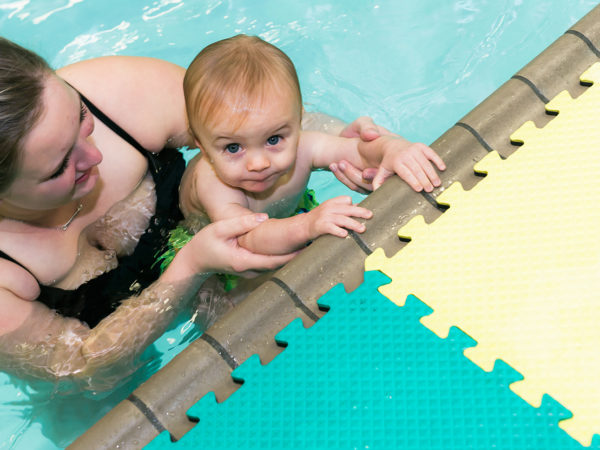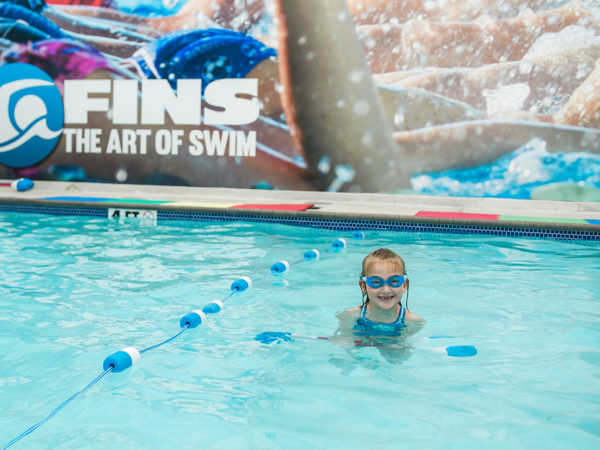By now, hopefully, you have had a chance to bring your baby to swim class at least once maybe even twice. We certainly hope you both are loving the time together. If your sweet baby seems less than thrilled to be in the water,or is not yet doing what you see other babies doing in the class, remember that is OK! Check back on the blog post from last week (insert link here) where we chatted about how your baby might be feeling in the beginning. They will enjoy the classes and be learning so much very soon, we promise!
This week, we want to dive deeper into FINS main focus:water safety,and more specifically what that looks like in our Baby FINS program. You now know, as we do, that drowning is the leading cause of accidental death in children ages 1-4. FINS is on a mission to change those statistics. Thank you for joining in the fight by giving your baby the gift of swim lessons! We will focus on 2 main water safety skills in these classes: how to get back to the wall if they fall in and floating on the back.
These 2 important water safety skills are actually repeated over and over again throughout class. Remember, we believe in teaching methods that include: Love, Bonding, Repetition, and Safety. When babies attempt and perform these skills, we want them to feel celebrated, safe and loved. We want to create positive experiences with rhymes, songs, encouragement AND plenty of repetition. Our goal is for your baby’s brain to associate these positive experiences with the water and to be able to utilize the skills to save themselves in a potentially life-threatening situation.
- Fall In, Turn Around, Climb Out is a skill that is built in to the classes with activities like: Humpty Dumpty, Ring Around the Rosies, Bump and Jumps and Walk Walks on the big blue mat. We like to practice these skills with babies and toddlers from the step/ledge, the side of the pool, or on a big float because we want them to have continuous practice on a variety of areas in and around water where they can potentially self-rescue. We emphasize this water safety skill in addition to the very important back float, because statistically most babies and toddlers fall in very close to a self-rescue area. It is rare for them to wind up way out in the middle of a body of water all alone, especially since a majority of accidental falls into the water are a result of reaching for something.
- Back float is incorporated throughout our classes with a range of methods including: London Bridge, rolling to float after swim outs, walk walks and much more. We have 2 goals when teaching the back float; first is for the baby to be comfortable in the position. We want them to sustain the back float so that they can get air and rest if they ever get into trouble in the water. We never rush a baby out of the back float position. We encourage baby to take a rest, take a few breaths and relax. The second goal is to create muscle memory. If this is achieved, the baby will know to flip over on their back when they need air. The back float is useful for self-rescue, but can also help them progress their swim endurance as they learn to swim further and further.
Speaking of swimming longer distances, be on the lookout for an email next week where we dive deeper into breath control progression within our Baby FINS program. You’ll find out just how far your baby will learn to swim, and how long they can safely hold their breath!




